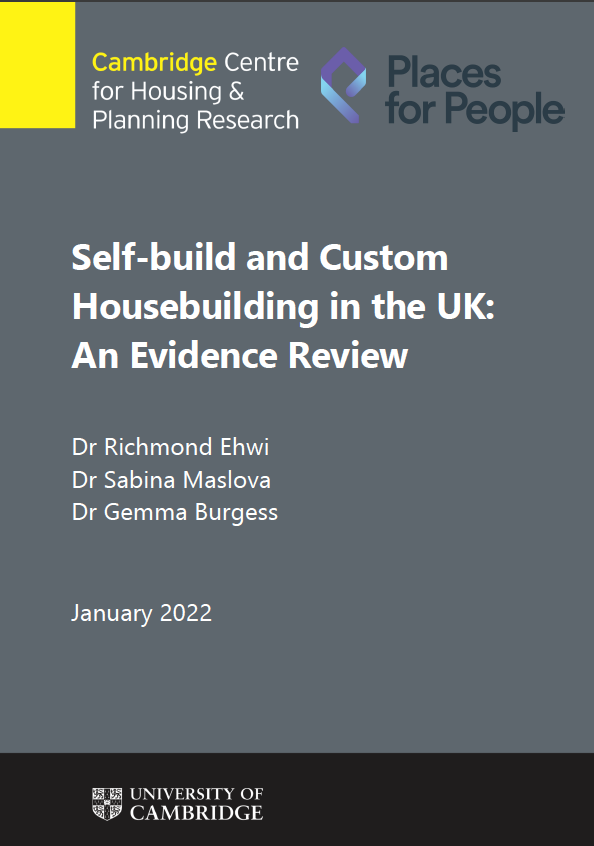Together with the University of Cambridge, Places for People has published a new report, Self-build and Custom Housebuilding in the UK: An Evidence Review, with a series of recommendations for industry and government to boost the development of the sector.

The review adds a valuable new source of evidence for the sector, adding weight to the findings and recommendations of the 2021 Bacon Review into Custom and Self Build.
In particular, it draws attention to the lack of clarity around the assessment of the size of the UK self and custom build sector. It also provides a more up to date picture of the European markets, which are often used to draw comparisons with the UK market.
As well as reviewing the evidence that tracks activity, the review also examines the constraints that impact the market, including access to serviced plots, issues in securing capital, uncertainties around planning and an under-developed culture of self building in the UK.
Recommendations
Better Data and Evidence
The report calls for more robust and up-to-date data, stressing the need for the Department for Levelling Up, Housing and Communities (DLUHC) to work with other bodies, including NaCSBA, that are involved in tracking sector activity.
This includes drill down into regional patterns and the mix of types and tenure of housing, that would support wider levelling up agendas, as well as greater understanding of European markets.
Planning
Greater support for those authorities struggling to fulfil their duties under the Right to Build would facilitate more, and better, activity.
To support this, authorities should work to increase the numbers of sites specifically for custom and self build, i.e. that provide serviced plots, and work to make planning less discretionary with regards to owner commissioned homes.
Mortgage finance
While Help to Build – soon to be available to borrowers – will help with mortgage finance, the review notes lenders’ request for a revolving fund from government to support activity. Bodies such as NaCSBA and also government should do more to educate the financial lenders about the custom and self build housing sector – and make this information easily accessible to banks and funding bodies.
Creating a self build culture
There is a need for industry and government to create support schemes and information, in particular for custom build, that can be accessed by would be self builders. Key to this is making better use of the resources of the National Self Build and Renovation Centre in Swindon, as well as government-led initiatives.
One of the reasons why self build flourishes in some European countries is a well developed sense of self build culture, supported by policy and planning that looks on the model favourably.
“Wider promotion of self-build, easier access to authoritative information to guide potential self-builders and custom housebuilders, support for finance options, and greater supply by the construction industry of packaged solutions of professional services, could help to develop a greater culture of self-build in the UK.”
Evidencing the sector
Helpfully the report also assesses the conventional approaches to assessing the size of the market in the UK, looking at the four models and their drawbacks in estimating market size and potential.
These include: The VAT Reclaim approach, the opinion poll/population data approach, single dwelling data, and plot registers. You can find out more about NaCSBA’s body of evidence in the Library.
Moving forwards, NaCSBA will be reviewing some of the recommendations in connection to it’s own industry practice.
Other findings
Interestingly, the review also found that only between 3-8% of self builders actually do the work themselves, with most people using a combination of builders and contractors to build their homes.
The review also found that most self builders were older, with equity and finance behind them, but that the largest group aspiring to self build was actually the 18-24 year olds. This reflects findings in NaCSBA’s own surveys, run with the Building Society Association, back in 2020.
“There appears, therefore, to be a difference between the people who aspire to self-build, and those who manage to do so,” it found (p3)
Image credit: Graven Hill by Duncan Hayes



